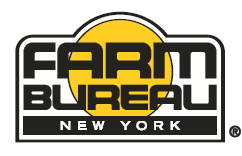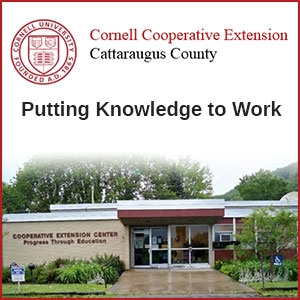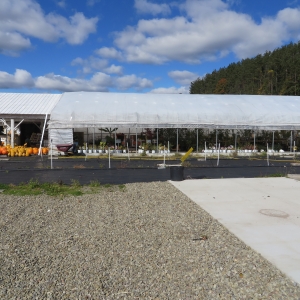Other Ag News:
On July 24, 2025, US Secretary of Agriculture, Brooke Rollins, issued memorandum SM-1078-015 outlining a proposed restructuring of the US Department of Agriculture (USDA). The plan was developed without meaningful engagement from farmers or other stakeholders. Since January 2025, USDA has already shed more than 18,000 employees, and the reorganization as proposed will likely drive thousands of additional departures.
Following mounting criticism, USDA created an informal channel for public feedback on the reorganization. The National Sustainable Agriculture Coalition (NSAC) urges farmers, advocates, and organizations to provide comments by emailing reorganization@usda.gov no later than September 30, 2025. However, NSAC remains deeply concerned that USDA has not followed the usual process of publishing a Federal Register notice for public comment, which is standard practice for proposals of this magnitude.
This piece is the third in a series exploring USDA’s staffing crisis and the potential consequences of the reorganization. Here, we focus specifically on staffing losses in the Natural Resources Conservation Service (NRCS) and examine how staff reductions could weaken the agency’s ability to deliver conservation assistance and financial support to farmers and landowners across the country. Our first post in the series examines staff losses across the USDA and states and the second examines the scope and impact of staffing losses within the research agencies.
A History of Staffing Decline in Vital AgencyNRCS is the primary agency within USDA that delivers on-the-ground conservation assistance to farmers, ranchers, and landowners. Through programs like the Conservation Stewardship Program (CSP) and the Environmental Quality Incentives Program (EQIP), NRCS staff work directly with producers to implement conservation practices that improve soil health, protect water quality, enhance wildlife habitat, and build resilience. NRCS provides both technical assistance and financial assistance programs. Technical assistance involves helping producers develop a customized conservation plan with suggested conservation practices that address their conservation goals. Financial assistance programs are voluntary programs such as EQIP and CSP in which farmers enter into contracts with the agency to provide financial assistance for adopting specific conservation practices best suited to their land and resources.
Between 2005 and 2023, NRCS has provided $87.3 billion in conservation support to farmers and ranchers, with 61% of that spending ($53 billion) going directly to farmers in the form of financial assistance payments and 37% going to support technical assistance, according to data provided by the agency.
Figure 1: NRCS Obligations by Type, 2005-2023
NRCS staffing levels have been steadily eroded over the past two decades. In 2005, the agency employed nearly 13,000 staff. By 2019, that number had dropped to just 8,914, a decline of more than 30%. Staffing partially rebounded in recent years, due in large part to dedicated efforts from the previous administration to hire and train new, young conservation professionals and improve producers’ customer experience. Total staff reached 11,623 employees in 2024, a major victory for producers who want faster service at the county level and more consistent access to technical experts.
Both producer and staff sentiment on the need to have more hands on deck to complete paperwork and prioritize time spent evaluating resource concerns in the field have been well documented. A survey by the Soil and Water Conservation Society of conservation professionals – watershed coordinators, soil and water conservation district employees, NRCS District Conservationists, and NRCS Soil Conservationists – found that 90% of practitioners agreed that “high employee turnover among conservation practitioners negatively impacts conservation momentum.” Conservation professionals were clear: they were already understaffed before the recent losses. 82% of practitioners said that there was a need for “more capacity to provide farmers/landowners with technical assistance” and they consistently rated staff capacity priorities as the highest needs in their local offices. One practitioner reported: “We simply have more landowners coming into the local office requesting assistance with programs than is possible to assist without cutting corners with a soil and water district staff of two and USDA staff of two.” These concerns existed before the NRCS staff were gutted in early 2025.
Losses since January 2025 have brought the number of NRCS staff down to again approximately 9,000 employees, echoing the record lows of 2019 during the previous Trump Administration. The NRCS budget request for fiscal year 2026 calls for a reduction to just 8,000 NRCS employees. This short-sighted goal would leave NRCS woefully underequipped to disperse the historic increase in conservation program dollars provided by the recent reconciliation package.
Figure 2: NRCS Staffing by Year
*Current NRCS staffing estimate is based on the separations and DRP information. FY2026 staffing is based on the NRCS budget.
Conservation Staff Have Been Wiped OutThe NRCS has lost nearly 1 in 4 of their staff since January 2025. The Deferred Resignation Program (DRP) offered buyouts and incentives to encourage federal employees to resign. At NRCS, 2,409 employees, 21% of the workforce, accepted the DRP. 560 NRCS employees accepted the first DRP in February 2025 and another 1,849 accepted the second round of DRP in April.
In addition to the NRCS employees who left the agency via the DRP, an additional 182 employees (2 percent) separated from the agency in just the first three months of 2025, according to data from the Office of Personnel Management. Separations include retirements (early, voluntary, or for disability), firing, failure to renew contracts, quitting, transferring to another federal agency, or other separation.
Altogether, nearly one in four NRCS employees have departed this year alone.
While the USDA has not publicly provided information on the staff who accepted the DRP, Charles Melton, a former staff member in the Office of the Executive Secretariat who himself accepted the DRP, estimates that it was primarily mid-career individuals with experience who left the department via the DRP: “What the DRP did was remove everyone who had twelve to fifteen years of experience or higher and took them out. It put a big donut hole in an organization that wasn’t fat to begin with,” Melton said.
The loss of mid-career and experienced staff to the DRP echoes the losses seen following the relocation of the Economic Research Service (ERS) and National Institute of Food and Agriculture (NIFA) to Kansas City, Missouri in 2019. This recent experience showed that it was largely the skilled employees with more than ten years of experience who left both agencies. By 2020, just 19% of NIFA employees had more than a decade of experience, down from over 50% before the relocation. At ERS, by 2021, just 37% of employees had more than a decade of experience, down from 71% before the relocation.
These staff losses are not sustainable. They threaten NRCS’s ability to deliver timely, effective conservation assistance to farmers at a moment when demand for these services is growing. Annecdotally, NSAC members report NRCS field staff are often either late career or relatively recent graduates. This can prove quite challenging for producers seeking to adopt the most innovative conservation practices available, as younger staff tend to have less experience with agriculture itself, and staff approaching the end of their career may be unfamiliar with newer research on the effectiveness of certain practices. Capable mid-career field staff, with a mastery of natural sciences and a strong understanding of the realities of farming, are by far the most helpful to producers and the most difficult to maintain within NRCS’ workforce. If, as observers are beginning to warn, recent departures have indeed pushed out experienced staff, producers can expect several years of greatly degraded service from NRCS. NSAC strongly supports action from Congress and USDA to prioritize the hiring of mid-career staff and to make policy changes within NRCS that will attract and retain capable young professionals for long-term careers with NRCS.
Table 1: NRCS Staffing Losses
Staff Sept 2024 (FedScope Sept. 2024 data)DRP TotalSeparations Jan-March 2025 (FedScope March 2025 data)% DRP% Separated Jan-March 2025% DRP and Separated11,6232,40918220.73%1.57%22.29% NRCS Staff Losses Are In the FieldMore than 99% of NRCS staff work outside of Washington, D.C.
The latest data from the Office of Personnel Management shows that just 105 employees out of the agency’s 11,623 staff in September 2024 worked in Washington, D.C. with the rest in offices around the country. These staff included 8,397 employees working as natural resource management or biosciences professionals and 1,313 engineers and architects.
NRCS staff work in every state and territory, providing direct support to farmers and ranchers for their conservation planning and contracts, and every state has lost a significant amount of NRCS staff, as seen in the map below. Indeed, every state except three – Delaware, Michigan, and Arkansas – has lost more than 20% of their NRCS staff and 36 states have lost more than 25% of their NRCS staff.
Figure 3: NRCS Staffing Losses
!function(){"use strict";window.addEventListener("message",function(a){if(void 0!==a.data["datawrapper-height"]){var e=document.querySelectorAll("iframe");for(var t in a.data["datawrapper-height"])for(var r,i=0;r=e[i];i++)if(r.contentWindow===a.source){var d=a.data["datawrapper-height"][t]+"px";r.style.height=d}}})}(); Staff Losses Exacerbate Farmer Wait Times and Service DisruptionsLow staffing levels and high demand from farmers and ranchers means that NRCS programs already have long wait times to enroll and many farmers who want to enroll are unable. Demand to participate in the conservation programs supported by USDA staff is extremely high, with tens of thousands of farmers and ranchers applying for contracts each year. Recent reporting by the Institute for Agriculture and Trade Policy (IATP) finds that less than 25% of the applications to the Conservation Stewardship Program (CSP) are granted contracts and only about 26% of the applications to the Environmental Quality Incentives Program (EQIP) are granted contracts.
Even prior to this latest round of staff losses, NRCS staff were stretched extremely thin with very high workloads. The wait time between when a farmer or rancher applies to one of the NRCS programs and finds out if they were awarded a contract is usually six months and sometimes up to a year. Advocates, like those at NSAC member Rural Advancement Foundation International (RAFI) that help farmers apply for NRCS funding, already encourage patience in navigating the process and caution farmers that it can be a long wait to find out if contracts are approved, and even longer before promised payments are actually received.
The loss of NRCS staff is already being felt at many field offices and for farmers across the country. Speaking to public radio in Kansas City, a former NRCS district conservationist Jamey Wood said that: “Producers are requesting conservation plans so they can do better conservation work, so they can participate in conservation programs, so they can get financial assistance to help them do conservation…And now, and this is my estimate, you’re going to lose basically a generation of conservation planners.” Maine farmer Seth Kroeck told reporters at Civil Eats that the staff losses at his local NRCS office have threatened the technical support and contracts he has with the agency, saying: “There were two employees that were in that office that I’ve been working with directly on programs, and they’re gone…There were two engineers that were helping us on different irrigation contracts, and they’re gone. It’s kind of a mess.”
Reorganization Amplifies RisksThe USDA reorganization plan threatens further disruptions to NRCS operations by consolidating its regional offices into five USDA hub locations, from where departmental agencies will be administered if the current reorganization proposal is adopted. Currently, the NRCS divides the nation into four regions, Central, Northeast, Southeast, and West. Each region is led by a Regional Conservationist, responsible for the agency operations, activities, and personnel in that region.
Two of the four Regional Conservationist positions are currently vacant: the Central and Southeast regions. The planned USDA hubs in Raleigh, North Carolina; Kansas City, Missouri; Indianapolis, Indiana; Fort Collins, Colorado; and Salt Lake City, Utah do not align with any meaningful natural resource regions or existing personnel divisions of the NRCS. Relocating regional duties to these new hubs will likely lead to further staff losses as employees choose not to relocate. This will also create further disruptions in the agency’s ability to fulfill its mission to serve farmers as they endeavor to protect our natural resources.
What’s at StakeFarmers and ranchers are facing unprecedented challenges. More frequent flooding and drought, degraded soil and water health, and intensifying economic pressures have placed America’s farmers and ranchers in extreme vulnerability. NRCS delivers both technical assistance and financial assistance to farmers and ranchers to tackle these challenges, but only if the agency has enough staff to deliver them effectively.
Farmers rely on local NRCS staff to deliver conservation solutions tailored to their land, and staff losses and the reorganization risk hollowing out the agency as farmers enter a time of unprecedented crisis and need. For the foreseeable future, every dollar that ends up on a farmer’s statement of cash flow is going to matter, and that includes cost share dollars delivered through conservation programs. Now is not the time to weaken a single tool in a farmer’s toolbelt.
Beyond the money, conservation planning and practices can lead to reduced input costs for producers, making sound technical advice just as financially valuable to producers as direct cost share. NRCS needs to swiftly change course if it is going to provide both.
NSAC encourages all farmers, advocates, and organizations to share their concerns with USDA by emailing reorganization@usda.gov before September 30, 2025.
The post USDA Staffing Crisis: Conservation Staff Losses Will Further Undermine Services to Farmers and Ranchers appeared first on National Sustainable Agriculture Coalition.
Myth #1: ASF is the next human pandemic.
ASF is a highly contagious viral disease infecting wild and domestic pigs. It is NOT a threat to human health. The virus cannot spread from pigs to people— it cannot make people sick and is not a food safety concern.
After a Monthslong Delay, USDA has Unfrozen Funds for Its Flagship Farmer-Led Research Program
Washington, DC, September 24, 2025 – This week, the United States Department of Agriculture (USDA) disbursed funds for the Sustainable Agriculture Research and Education Program (SARE). SARE funding – which is normally made available in March – was first made available through a ‘request for application’ (RFA) on September 11, giving SARE Host Institutions little time to secure funding before the end of the federal fiscal year.
“The widespread support for SARE, most notably from farmers and ranchers themselves, speaks to the programs’ transformative impact across nearly four decades. In meeting its statutory obligation, USDA has ensured that SARE will continue its critical role in helping farmer driven research keep pace with the growing challenges of rural economies, soil health, and competitiveness of American producers,” said Mike Lavender, Policy Director at the National Sustainable Agriculture Coalition.
Hundreds of farmers alongside a bipartisan contingent of Members of Congress rallied behind SARE in recent months. NSAC is pleased that, in accordance with statute, SARE Host Institutions have received SARE funds and can now move forward with funding important research and education projects for farmers and ranchers across the country. SARE administrators estimate that with this fiscal year’s funding, roughly 400 farmers and ranchers will receive funding to do on-farm, regionally based, and outcome-oriented competitive research. This number does not account for the thousands of farmers, ranchers, researchers, extension agents, and graduate students that participate in SARE funded research, education, and outreach programming every year.
NSAC remains a strong supporter of SARE and continues to advocate for growing the program’s research and funding capacity. To learn more about SARE and its impacts, visit our Grassroots Guide.
The post Release: USDA Disburses Funds for Sustainable Agriculture Research and Education Program appeared first on National Sustainable Agriculture Coalition.
(Washington, D.C., September 24, 2025) – Today, U.S. Secretary of Agriculture Brooke L. Rollins announced that Dr. Benjamin S. Carson, Sr., M.D., was sworn in as the National Advisor for Nutrition, Health, and Housing at the U.S. Department of Agriculture (USDA).
(Washington, D.C., September 24, 2025) – Today, U.S. Secretary of Agriculture Brooke L. Rollins announced the U.S. Department of Agriculture (USDA) Food and Nutrition Service (FNS) is proposing changes to strengthen the stocking requirements for retailers participating in the Supplemental Nutrition Assistance Program (SNAP). These changes would protect the program, participants, and taxpayers by mitigating fraud, waste, and abuse and ensuring additional healthy food options for recipient families.
(Washington, D.C., September 23, 2025) — Today, U.S. Secretary of Agriculture Brooke L. Rollins announced the USDA Forest Service is investing $200 million in 58 projects through the Community Wildfire Defense Grant Program. These investments, thanks to Congressionally mandated funding, help at-risk communities plan for and reduce wildfire risk, protecting homes, businesses, and infrastructure.
Washington, DC, September 23, 2025 – This week, over 500 hundred farmers from every state, US Territory, and several Tribal Nations delivered a letter to the United States Department of Agriculture (USDA) stressing the importance of the Sustainable Agriculture Research and Education Program (SARE). While SARE funding is normally made available in March, the RFA’s were not released this year until September 11, giving SARE Host Institutions little time to secure funding before the end of the fiscal year. The letter asks that USDA ensure SARE funding is delivered before the end of the fiscal year, to make certain farmers will be better prepared to meet future productivity challenges and remain competitive, due to more easily accessible and regionally appropriate research through SARE.
“As USDA’s only farmer-led research program, SARE has invested in farmer profitability, stewardship, and quality of life for over 35 years. At a time when farmers need more answers than questions, SARE’s stellar, decades-long track record proves it can offer exactly that,” said Mike Lavender, Policy Director at the National Sustainable Agriculture Coalition.
“The current demand for sustainable agriculture solutions far outweighs available resources. SARE plays a critical role in helping farmer driven research keep pace with the growing challenges related to the state of the rural economy, soil health, and competitiveness of American producers. NSAC remains a strong supporter of SARE and continues to advocate for growing the program’s research and funding capacity,” said Nick Rossi, Policy Specialist at the National Sustainable Agriculture Coalition.
Since 1988, the Sustainable Agriculture Research and Education Program (SARE), has funded more than 9,000 farmer-driven research and education initiatives through competitive grant awards totaling nearly $478 million. As the only farmer-driven, sustainable agriculture competitive research grant program offered by the USDA, SARE provides farmers and researchers with vital opportunities to better understand agricultural systems and to increase profitability, build on farm resilience, and strengthen rural communities.
Find the letter here.
Read what farmers are saying about their involvement with SARE:
“I received a SARE grant to help the Kansas City Food Hub – a Cooperative owned by 15 farmers (including myself- we are now owned by 30 farmers) about six years ago when the Hub had been in business for 4 years and had outgrown systems that were under strain from increased sales. Our project aimed to upgrade our food safety system and develop a new brand for the business. Our upgraded food safety protocols helped us bring on a new big institutional client. When COVID hit and that institution closed, because of our new branding and website, the public was able to find us easily and we were able to pivot our sales from 100% wholesale to 100% retail,” said Katie Nixon of Green Gate Family Farm, Missouri.
“I received a Farmer/Rancher grant in the late 1990’s. I served on the NC Region SARE advisory committee for 8 years. I still serve on the Kansas advisory committee.I have seen firsthand how frugally SARE’s implementation structure operates. This program is 37 years old, and is very well respected throughout rural America. It would have been such a crime to see it eliminated. Thankfully, common sense prevailed” said Donn Teske, a sixth generation beef cow/calf rancher, Kansas.
“SARE helps growers like me do practical, on-farm research that is specific to my climate. Right now, precious little research is done on semi-arid, small-scale vegetable growing, so another farmer and I are doing the research ourselves through a SARE grant. The emphasis of SARE on the E (education) means that this research doesn’t go on a shelf somewhere–it goes directly from farmers to farmers who can use it now... If USDA cuts this small but mighty program, it will be another confirmation that the government is only interested in corporate export agriculture, not local family farms like mine. It shows a real lack of understanding of food access and security and who really feeds people in America,” said Nella Mae Parks of Nella Mae’s Farm, Oregon.
“As a farmer, I value the SARE program because it provides crucial funding for research that helps us develop farming practices that protect our soil and water while still maintaining profitable operations. Because so much research is carried out by researchers without a farmer’s perspective, the program’s focus on farmer-to-farmer education means we’re learning practical solutions from other producers who understand the real challenges we face in the field every day. SARE’s support for on-farm research projects allows us to test sustainable methods on our own land in real world scenarios and share those results, creating a community of farmers working together to build markets, techniques, and know-how that leads to a more resilient agricultural industry,” said Bill Pluecker of Begin Again Farm, Maine.
“I am still glowing from taking big steps on my SARE project yesterday. We signed an agreement with another farmer and that farmer accidentally “caught lightning in a bottle” on part of their farm. Our SARE project is partially about replicating their success. By sheer coincidence, their crops spontaneously did something extraordinary. We are working to replicate what happened, so that other farmers can benefit... I was in the field with some other chestnut farmers. The land use history of that place is unusual- a coal company cleared the forested land, an oak and American chestnuts- and then changed their mind about mining that spot, so they planted Chinese chestnuts, before deciding to sell the land. Because of this, something weird happened. A section of this Chinese chestnut orchard has North American species of Boletus variipes mushroom growing under Chinese chestnuts. Maybe the mushroom survived in the soil for a few years, from the forest trees that used to grow there. The combination of an American porcini and a Chinese chestnut is unknown. We were hoping to find this pairing, however, because our goal is to produce Boletus mushrooms to sell on the global porcini market. We didn’t want to introduce an Asian or European species of mushroom to our chestnut orchard, because we didn’t want to accidentally unleash a new invasive species. Now that we’ve found a native species, we think we can help Chinese chestnut trees produce a type of expensive, nutrient-dense mushrooms for sale- much like farmers in Europe and Asia have been doing for centuries!” said Badger Johnson of Paradise Ecological Services, Ohio.
###
About the National Sustainable Agriculture Coalition (NSAC):
The National Sustainable Agriculture Coalition is a grassroots alliance that advocates for federal policy reform supporting the long-term social, economic, and environmental sustainability of agriculture, natural resources, and rural communities. Learn more: https://sustainableagriculture.net/
The post Release: Over 500 Farmers Rally Behind the Sustainable Agriculture Research and Education Program appeared first on National Sustainable Agriculture Coalition.
For Immediate Release
Contact: Laura Zaks
National Sustainable Agriculture Coalition
press@sustainableagriculture.net
Release: Nearly 600 Groups Deliver Joint Letter to Congress Urging a Strong and Fair Farm BillWashington, DC, September 22, 2025 – Today, the National Sustainable Agriculture Coalition (NSAC) and nearly 600 national, state, and local organizations delivered a joint letter to Congressional leaders urging them to aim high toward a farm bill that invests in our mutual prosperity. Addressed to Senate and House leadership as well as Agriculture Committee chairs and ranking members, the letter calls on Congress to address the harmful provisions enacted through the recently passed budget reconciliation bill (P.L. 119-21). Against the backdrop of a dire farm economy, the letter calls for advancing a long overdue farm bill that supports family farmers, rural communities, healthy food access, essential nutrition programs, and more.
“The decisions made in this farm bill will touch every person in this country,” the letter states, “[we] stand together to say we will only support a farm bill that provides adequate and accessible SNAP benefits to families and individuals; makes our food safer, healthier, and more affordable; supports good, family-sustaining jobs for food workers; supports family farmers and their communities; and ensures our food is produced in ways that are consistent with our values.”
The diverse coalition of signatories includes organizations focused on addressing hunger and nutrition, labor, farm, rural communities, and sustainability. Nearly 80 national organizations joined more than 500 state and local organizations from every region of the country including insular areas.
“As organizations representing millions of individuals, farmers, workers, and families whose lives and livelihoods are impacted by the farm bill, we urge you to aim high toward a farm bill that restores Americans’ trust in the federal government. … A good farm bill would fully address the devastating and ongoing impacts of the U.S. Department of Agriculture’s office closures, reorganizations, relocations, as well as the uncertainty exacerbated by funding freezes, award terminations, and staff firings – all of which have weakened the Department’s ability to serve farmers, rural small businesses, and food insecure communities… Anything short of that fails our farmers, our communities, and us all.”
Read the full letter here.
###
About the National Sustainable Agriculture Coalition (NSAC)
The National Sustainable Agriculture Coalition is a grassroots alliance that advocates for federal policy reform supporting the long-term social, economic, and environmental sustainability of agriculture, natural resources, and rural communities. Learn more and get involved at: https://sustainableagriculture.net
The post Release: Nearly 600 Groups Deliver Joint Letter to Congress Urging a Strong and Fair Farm Bill appeared first on National Sustainable Agriculture Coalition.
(Washington, D.C., September 21, 2025) – Hours ago, Mexico’s National Service of Agro-Alimentary Health, Safety, and Quality (SENASICA) confirmed a new case of New World screwworm (NWS) in Sabinas Hidalgo, located in the state of Nuevo León, less than 70 miles from the U.S.-Mexico border.
(Washington, D.C., September 20, 2025) — The U.S. Department of Agriculture announced the termination of future Household Food Security Reports. These redundant, costly, politicized, and extraneous studies do nothing more than fear monger.
Pages
Signup for the Ag Newsletter
Get the freshest farm news, events and updates from in and around Cattaraugus County, NY at least once a month! Go signup!
Other ways to stay connected:
Get Involved in Farming
Resources for Starting a Farm in Cattaraugus County
Profile of Cattaraugus County soils
Agriculture Career Exploration
Questions about farming? Find out Who to Call










